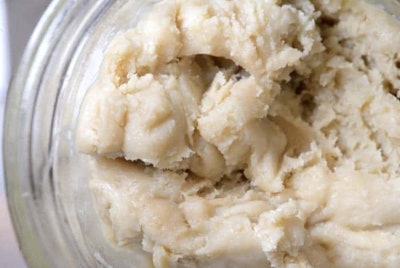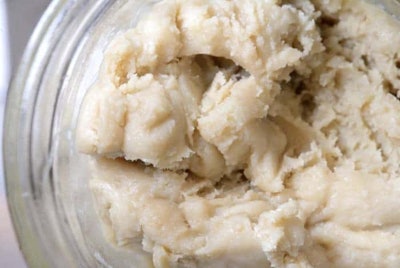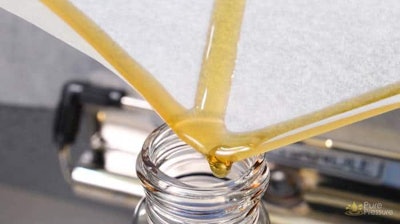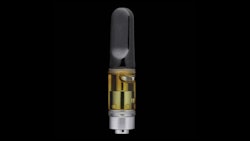
Market demand across the cannabis industry has generally followed a straightforward path: After legalization, consumers look for flower, then edibles and vape products, followed by more focused interest in concentrates. It’s that last and most varied segment that’s seeing tremendous growth recently.
Within the concentrates category, solventless concentrates are growing rapidly.
“What we're seeing with solventless is that as markets mature, their consumer bases are starting to look for higher quality products and different product experiences,” PurePressure Director of Marketing Eric Vlosky says. “A lot of people end up landing on solventless as they get more educated about what goes into their cannabis. You're seeing it happen very quickly in mature markets, and then other markets are following suit.”

Based on January-to-January growth, from 2020 to 2021, BDS Analytics predicts that 2021 solventless sales could hit $62.5 million in California.
In Oregon, another more mature market, it’s the same story. Solventless sales raced skyward from $7.4 million in 2019 to $17.8 million in 2020 to an anticipated $30.6 million in 2021.
To some degree, the story of cannabis in the U.S. is still one of mature markets signaling consumer trends that will follow in other parts of the country. As California and Colorado go, so goes the rest of the U.S., often enough. That’s the case when it comes to genetics, new products (THC-infused beverages, let’s say) and broader market categories like solventless concentrates. The momentum is here.
What solventless offers is the clearest expression of the plant’s original chemistry in concentrated form, due to that fact there is no intermediary chemical vehicle through which the extraction is happening. As a market description on dispensary shelves, it’s an expanding niche within the broader game of cannabis consumer demand, and budtender education is helping the trend along. It’s getting less common to walk into a dispensary and not get into a conversation about the ins and outs of solventless.
As such, these products may be more expensive, but the end result is a flavor profile and ensemble effect that caters to sophisticated tastes, such as you will find in maturing markets.
This is the area of the cannabis space where you’ll find first adopters, influencers, connoisseurs.

And do your answers to those questions fit into the overall story that your brand has been carefully crafting?
“Before you buy anything or even identify where in your lab you're going to create space, you want to have an idea of what SKUs and what products mesh well with your brand and your market,” Vlosky says. “Once you have an idea of what products you think the market will want from your brand and what fits, then it's planning in your lab how much square footage you have and how much processing you think that your lab can undertake in a week, a month, a year, and having a multi-phase roll-out.”
This is an important point. In most areas of the cannabis space, you’re not simply diving into the deep end on day one (although it might feel like you are). Scale is a vital concept in this industry, and that’s no different when you’re considering solventless extraction. As part of your brand, it will take time and observation to learn what works best. The on-ramp in those early days of your solventless experiment will be only a scaled-down preview of what your phase-two and phase-three plans might look like.
Early on, make sure that you have the right team in place
“Have someone on the team—whether it's the owner or the lab manager or one of the extraction techs—who’s actually passionate about solventless, which is pretty common, actually, because a lot of core industry people are really passionate about solventless,” Vlosky says. “That really helps, because then they're going to help make good decisions to make sure that you're emphasizing quality and making the right moves to make a high-quality product.”
Then there are some of the more immediate issues to tie up. Identify the space you’ll use for this work and for the freezers you’ll need to store fresh-frozen plant material. Source premium genetics specifically for this solventless use. Use RO water and RO ice (not tap) for your hash washes. “Having that clean RO water makes a huge difference in the end result in quality,” Vlosky says.
If all goes well, how will you expand operations in your lab? Who will you need to hire? How will you pivot to meet evolving consumer preferences among the SKUs you’re offering?
Part of those questions involves the material pipeline that you’ve set up for the first phase of your foray into solventless.
If your business is vertically integrated, then you’ve got a known source for plant genetics that could work well in a solventless extraction environment (resinous trichomes, rich terpene profiles). You can tailor your cultivation vertical toward this new solventless venture.
If you’re not vertically integrated, what sort of input source have you lined up? Early on in conversations with growers, make sure to clearly explain that you’re interested in material for solventless extraction. This helps the transaction and ensures that the grower identifies plant genetics most suitable to your end goal.
The key is to keep that material pipeline consistent as you grow your solventless operation, and to cross-check it against your longer-term goals.


















